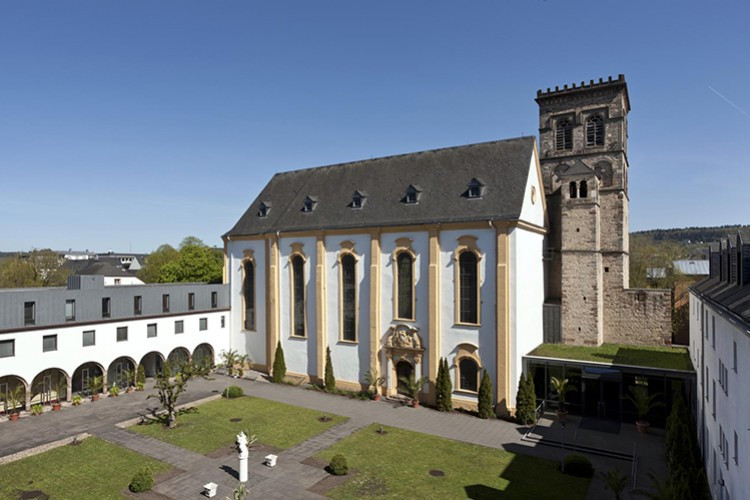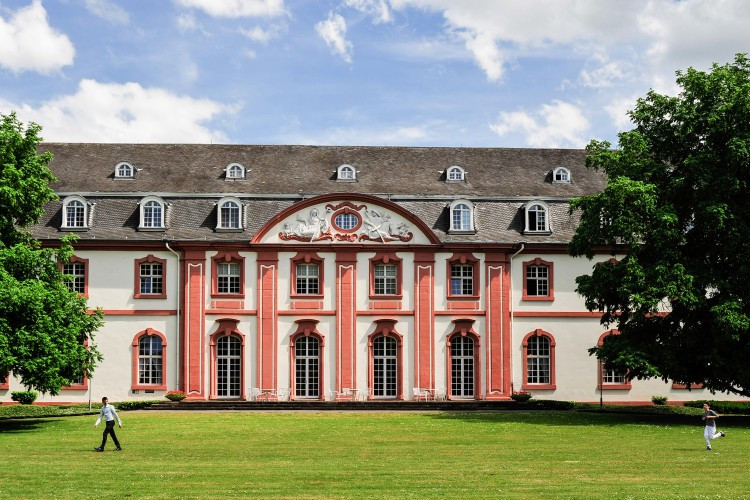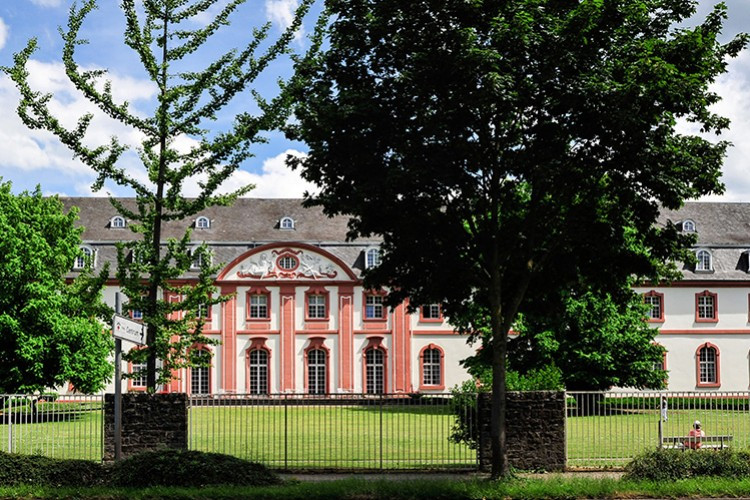Read more
But the word ‘Oeren’ itself is evidence that the convent wasn’t just built on green grass in the 7th century. Serving as the foundations of the complex were the Roman ‘horrea’, the ancient granaries, which have still been partly preserved in the complex’s western wing. But later generations naturally also left their architectural mark, and visitors today will particularly notice the abbey’s Romanesque belltower and the impressive western wing on the shores of the Moselle, which was renovated around 1740. Like so many other churches and monasteries, however, St Irmina’s was also dissolved under Napoleon, and ultimately converted into a civil hospital, which unfortunately did not survive World War II. Since 1960, the complex has been an aged-care and nursing home, providing capacity for up to 168 people. As such, there is only very limited accessibility for the general public.
A must for: External architecture admirers. Moselle shore-walkers. Baroque enthusiasts and wine lovers (see insider tip).
Ancient heritage: 50%
Wine: 40%
Architectural mix: 30%
PSSSST! THE INSIDER TIP:
The Vereinigte Hospitien have also earned a reputation in premium wine in Trier. The first official evidence of Riesling-growing on the Moselle dates back to 1464, as a record in one of the accounts books of St Jacob’s Hospital, whose tasks were taken care of by the Vereinigte Hospitien following their founding by Napoleon Bonaparte. They can also lay claim to owning Germany’s oldest wine cellar, whose inimitable atmosphere makes the wine tastings there extra special.
Photos: Andreas Durst on behalf of Vereinigte Hospitien
A must for: External architecture admirers. Moselle shore-walkers. Baroque enthusiasts and wine lovers (see insider tip).
Ancient heritage: 50%
Wine: 40%
Architectural mix: 30%
PSSSST! THE INSIDER TIP:
The Vereinigte Hospitien have also earned a reputation in premium wine in Trier. The first official evidence of Riesling-growing on the Moselle dates back to 1464, as a record in one of the accounts books of St Jacob’s Hospital, whose tasks were taken care of by the Vereinigte Hospitien following their founding by Napoleon Bonaparte. They can also lay claim to owning Germany’s oldest wine cellar, whose inimitable atmosphere makes the wine tastings there extra special.
Photos: Andreas Durst on behalf of Vereinigte Hospitien
Opening hours
Regular:
Mondays - Saturdays: 7.30 a.m. - 6.30 p.m.
Note:
Visits are only possible outside the church services.
Admission
Free admission - exept for concerts.





